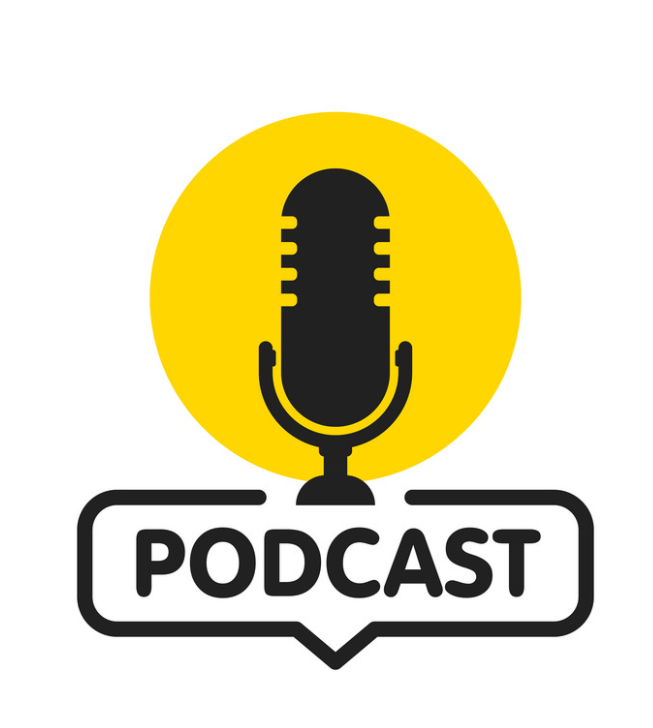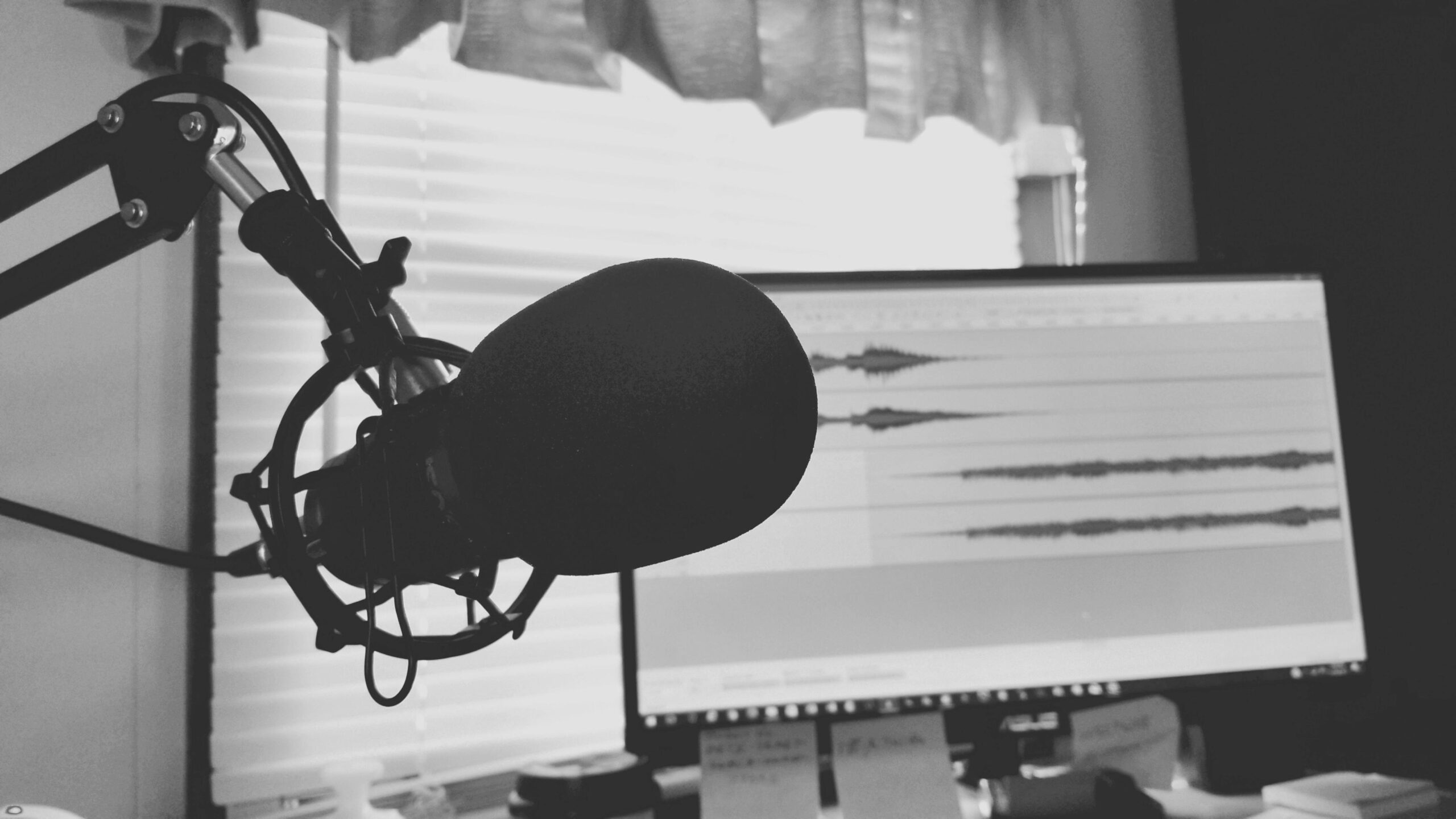Amplify Your Voice, Elevate Your Message
Podcasting and content creation have never been more powerful. People are tuning in every day to learn, be entertained, and connect with voices that matter. But with so many shows out there, how do you make yours stand out? That’s where expert guidance, the right tools, and proven strategies come into play.
Here at We Talk Studio, I’ll share everything I’ve learned—from choosing the best microphones to editing like a pro, to monetizing your content and building a dedicated audience. Whether you’re looking to launch a new show or take your existing platform to the next level, I’ve got you covered.
Your Podcast. Your Story. Your Success

Recent Blogs
Check Our Recent Blogs
- Surviving the Heat: My AC Repair Experience in Pembroke Pinesby user
Working in my studio is usually a peaceful and productive experience. That is, until I got the dreaded call from my wife. “The AC is out,” she said, and trust me, she wasn’t happy about it. With the South Florida heat creeping in, I knew this was a problem I had to solve—immediately.
I barely had time to react before she reminded me, in no uncertain terms, that it was my job to get it fixed. There was no escaping this one. So, I did what anyone in my situation would do—I pulled out my phone and Googled the best AC company Pembroke Pines. Within minutes, I found a highly-rated team and gave them a call.
The repair team arrived at my house faster than I expected, ready to tackle the problem. They were professional, courteous, and best of all, they knew exactly what they were doing. After a quick assessment, they got to work, ensuring that our unit would be back to cooling in no time. Not only did they fix the issue, but they also gave me some useful advice on keeping the system running efficiently.
With my home AC back in business, I realized my studio unit could probably use some maintenance, too. I asked the team if they could check it out while they were already on-site. They agreed without hesitation and headed to my workspace. After a thorough inspection, they fine-tuned the system, reducing the noise and restoring that refreshing blast of cold air that keeps me comfortable while I work.
What impressed me the most—besides the quick turnaround—was how affordable their services were. In an industry where unexpected costs can quickly add up, their pricing was reasonable and transparent. They also explained how I could save even more money by signing up for an annual maintenance plan. Regular servicing, they assured me, would help prevent future breakdowns and keep everything running smoothly. It was a no-brainer, so I signed up on the spot.
At the end of the day, both my home and studio were cool again, my wife was happy, and I could get back to work without melting in the heat. Finding the right AC repair company in Pembroke Pines made all the difference. If you ever find yourself in the same hot seat, I can confidently say—these guys are the ones to call.
- The Future of Audio Content: Trends in Podcasting & Live Streaming
 by Jan
by JanWhen I started exploring the world of podcasting and live streaming, I had no idea how much the industry would evolve. What began as a niche form of entertainment has now become one of the fastest-growing content mediums, with millions of creators, brands, and businesses jumping into the space.
But what’s next? As technology advances and audience behaviors shift, the future of audio content is set to transform in exciting ways. Whether you’re a podcaster, live streamer, or just someone who loves consuming audio content, here’s what you can expect in the coming years.
1. Interactive & Immersive Podcasting
Podcasting has always been a one-way conversation, where creators talk, and listeners tune in. But that’s changing. The future of podcasting is moving toward interactive experiences, allowing audiences to engage directly with the content.
What’s Changing?
🎙 Live podcasting – More podcasters are experimenting with real-time audience interaction, allowing listeners to call in, submit questions, or participate in live discussions.
🎙 Social audio platforms – Apps like Clubhouse, Twitter Spaces, and Spotify Live are blending podcasting with social media, creating more interactive listening experiences.
🎙 Polls & Q&As within episodes – Platforms like Spotify are already testing features that allow listeners to vote on topics, respond to polls, and leave feedback within episodes.This shift from passive listening to active engagement is redefining how podcasts are created and consumed.
2. The Rise of AI-Generated Audio Content
Artificial Intelligence (AI) is playing a massive role in content creation, and podcasting is no exception. AI-powered tools are making it easier than ever to edit, produce, and even generate audio content automatically.
How AI is Changing Podcasting & Live Streaming:
🤖 AI voice cloning – Tools like Descript and Resemble AI allow podcasters to create lifelike synthetic voices, reducing the need for re-recording.
🤖 Automated editing & transcription – AI-based software can remove background noise, improve audio quality, and generate transcripts within minutes.
🤖 AI-generated hosts & scripts – Some companies are even developing entirely AI-generated podcasts, where artificial hosts narrate news, interviews, or scripted content.While AI will never replace the human touch in podcasting, it’s making content creation more accessible, faster, and cost-effective for creators.
3. Video Podcasting & Live Streaming Integration
Podcasting used to be all about audio-only experiences, but now, video podcasting is quickly becoming the norm. Platforms like YouTube, TikTok, and Spotify are pushing video content harder than ever, encouraging podcasters to record video versions of their shows.
Why Video is the Future of Podcasting & Live Streaming:
📹 YouTube is becoming a podcast hub – More podcasters are uploading video episodes to YouTube to increase discoverability.
📹 Short-form video boosts engagement – Creators are repurposing podcast clips into TikTok, Instagram Reels, and YouTube Shorts to reach new audiences.
📹 Live video streaming creates deeper connections – Many podcasters are live-streaming their episodes on Twitch, Facebook Live, and LinkedIn Live to engage with their audience in real time.If you’re thinking about growing your podcast, adding video elements might be the next big step.
4. Niche Podcasting & Hyper-Specialized Content
As more creators enter the podcasting space, broad topics are becoming oversaturated. The future of podcasting is moving toward hyper-niche content, where creators cater to highly specific audiences.
Why Niche Content is Winning:
🔹 More loyal listeners – Niche podcasts attract dedicated audiences who are highly engaged.
🔹 Better monetization opportunities – Brands love targeted advertising, making niche podcasts ideal for sponsorships.
🔹 Less competition – Instead of competing with general podcasts, niche creators stand out with unique topics.For new podcasters, the best strategy isn’t to be everything to everyone—it’s to find a unique niche and own it.
5. Monetization is Evolving: Beyond Ads & Sponsorships
Podcast monetization is no longer just about getting sponsorships. New revenue models are emerging, allowing creators to make money in multiple ways.
Future Monetization Trends:
💰 Subscription-based podcasts – Platforms like Apple Podcasts and Spotify now allow creators to offer premium paid content.
💰 Live event monetization – More podcasters are hosting paid live events, workshops, and meetups.
💰 NFTs & blockchain in podcasting – Some creators are exploring NFTs to sell exclusive episodes, bonus content, or listener perks.Monetization is becoming more flexible, giving podcasters more control over how they earn from their content.
6. The Growth of Multi-Language & Global Podcasting
Podcasting is going global, and creators are expanding beyond English-speaking audiences. More podcasts are being produced in multiple languages, reaching international markets.
How Global Podcasting is Expanding:
🌎 AI-powered translations & dubbing – New AI tools allow podcasters to automatically translate and dub their episodes in multiple languages.
🌎 Regional podcast networks – Countries like India, Brazil, and Mexico are seeing massive podcast growth.
🌎 Cultural storytelling – More creators are sharing localized stories and perspectives that appeal to diverse audiences.This trend opens huge opportunities for creators to reach new listeners across different countries.
Final Thoughts: The Future is Bright for Audio Content
The world of podcasting and live streaming is evolving faster than ever, and for content creators, that means more opportunities to engage, grow, and monetize. From interactive podcasting and AI-powered editing to video integration and niche content, the future is full of exciting possibilities.
For me, the biggest takeaway is that audio content isn’t slowing down—it’s only getting bigger and more innovative. Whether you’re a podcaster, live streamer, or someone thinking about starting, now is the perfect time to jump in and be part of the evolution.
🚀 What trends are you most excited about? Let’s discuss in the comments! 🎙️✨
- How to Monetize Your Podcast and Make It Profitable
 by Jan
by JanWhen I first started podcasting, I did it purely out of passion. I loved sharing my thoughts, having deep conversations, and building a community of listeners. But as my podcast grew, I started wondering—could I actually make money from this?
The answer is yes—and you don’t need millions of downloads to start monetizing your podcast. Over time, I learned that with the right strategies, dedication, and a little creativity, podcasting can become a profitable revenue stream. Whether you’re just starting out or looking to take your podcast earnings to the next level, here are some of the best ways to monetize your podcast and turn your passion into profit.
1. Sponsorships & Advertisements: The Classic Model
One of the most common ways podcasters make money is through sponsorships and ad placements. Brands are always looking to connect with engaged audiences, and podcasts offer a unique opportunity for direct, personal advertising.
How Sponsorships Work:
✔️ Companies pay you to promote their product/service during your episode.
✔️ You usually read a short sponsored message before, during, or after the episode.
✔️ Payments are typically based on CPM (cost per 1,000 downloads) or a flat fee per episode.How to Get Sponsorships:
🎙️ Join a Podcast Ad Network – Platforms like Podcorn, AdvertiseCast, and Anchor Sponsorships connect podcasters with advertisers.
🎙️ Reach Out to Brands – If you have a niche audience, contact brands directly that align with your content.
🎙️ Offer Value to Sponsors – Even if your audience is small, emphasize engagement and trust over pure numbers.Pro Tip: If you’re just starting out, focus on getting affiliate sponsorships or local businesses to advertise before approaching big brands.
2. Affiliate Marketing: Earn by Recommending Products
Affiliate marketing is one of my favorite ways to monetize my podcast, especially when I don’t have traditional sponsors lined up. Instead of getting a flat fee for an ad, you earn a commission for every sale you generate.
How It Works:
✅ You promote a product/service with a unique affiliate link.
✅ Listeners use your link to purchase the product.
✅ You earn a commission on each sale.Where to Find Affiliate Programs:
🔗 Amazon Associates – Earn commissions on products you mention.
🔗 ShareASale & CJ Affiliate – Connects you with thousands of brands.
🔗 Direct Brand Partnerships – Many companies offer affiliate programs (check their websites!).I love this method because it allows me to monetize naturally by recommending products I genuinely use and believe in.
3. Offer Exclusive Content with Memberships & Subscriptions
One of the best ways to monetize your podcast without relying on sponsors is by offering exclusive content through a paid membership.
Platforms to Use:
🎧 Patreon – Listeners subscribe for exclusive content, early access, or bonus episodes.
🎧 Apple Podcasts & Spotify Subscriptions – Offer premium episodes for paying subscribers.
🎧 Supercast & Memberful – Great for integrating premium content into your existing website.What to Offer Subscribers:
🔹 Bonus episodes
🔹 Behind-the-scenes content
🔹 Early access to new episodes
🔹 Ad-free listening
🔹 Live Q&A sessionsThis model works great if you have a dedicated listener base that wants more access to you and your content.
4. Sell Your Own Products or Services
One of the most profitable ways I’ve monetized my podcast is by selling my own products or services. Instead of just promoting other brands, why not promote your own business?
What You Can Sell:
💡 Merchandise – T-shirts, mugs, stickers, and more with your podcast branding.
💡 Courses or Workshops – Teach your audience something valuable related to your niche.
💡 Coaching or Consulting – If you’re an expert in your field, offer 1-on-1 sessions.
💡 E-books or Guides – Sell downloadable resources for your listeners.I found that listeners who trust your content are more likely to invest in products you create. If you have a strong brand, this can become a major revenue stream.
5. Crowdfunding & Listener Donations
Some listeners are willing to support your show simply because they love your content. Crowdfunding and donations allow fans to contribute financially without requiring anything in return (though offering perks helps).
Ways to Get Listener Support:
🎙️ Buy Me a Coffee – A simple way for listeners to donate small amounts.
🎙️ Ko-fi – Another donation platform for creators.
🎙️ GoFundMe/Kickstarter – Great for raising funds for special podcast projects.If you have an engaged audience that appreciates your content, this is an easy way to bring in some income.
6. Host Paid Live Events or Webinars
One creative way I’ve seen podcasters make money is by hosting live shows, virtual workshops, or meetups. If you have a loyal audience, they might be willing to pay for:
🎤 Live Q&A sessions
🎤 Virtual podcast recording events
🎤 In-person networking events
🎤 Industry-related workshopsSelling tickets or sponsorships for live events can bring in extra income while helping you connect with your audience in a deeper way.
Final Thoughts: The Key to Podcast Monetization
Making money from podcasting takes time, but the key is to start with ONE monetization strategy and build from there. Whether it’s sponsorships, memberships, affiliate marketing, or selling your own products, consistency and audience engagement are what truly make podcasting profitable.
For me, the most rewarding part of monetizing my podcast isn’t just the income—it’s the fact that I get to do what I love while building a sustainable business around it.
Which monetization strategy are you most excited to try? Let’s discuss in the comments! 🚀🎙️💰
- How to Start a Podcast: A Beginner’s Guide
 by Jan
by JanStarting a podcast was one of the most exciting (and slightly overwhelming) things I’ve ever done. I remember sitting in front of my microphone for the first time, wondering if I had the right setup, the right content, or if anyone would even listen. But the truth is, podcasting isn’t about having the perfect voice or expensive gear—it’s about sharing your unique perspective, stories, and expertise with the world.
If you’ve been thinking about launching your own podcast but don’t know where to start, you’re in the right place. Here’s a step-by-step guide to help you go from idea to recording, editing, and publishing your first episode.
1. Find Your Podcast Niche & Audience
Before you start recording, take some time to define your podcast’s focus. Ask yourself:
🎙️ What do I want to talk about? Choose a topic that you’re passionate about—something you can discuss for hours without running out of ideas.
🎙️ Who is my target audience? Are you speaking to business professionals, creatives, storytellers, or hobbyists? Understanding your audience helps you tailor your content and keep listeners engaged.
🎙️ What’s my podcast format? Decide whether you want to do solo episodes, interviews, or co-hosted discussions. A structured format keeps things consistent and easy to follow.
Once you have your niche, brainstorm at least 10 episode ideas to make sure you have enough content to sustain your podcast long-term.
2. Choose Your Podcast Name & Branding
Your podcast’s name is the first thing people will see, so it should be memorable, clear, and relevant to your topic. Avoid overly complicated names—short and catchy is best.
Along with the name, you’ll also need:
✅ A podcast description – A brief summary of what your show is about.
✅ Cover art – A high-quality image that represents your podcast.
✅ Intro & outro music – To create a professional and recognizable sound.Tools like Canva can help design eye-catching podcast cover art, and sites like Epidemic Sound or AudioJungle offer royalty-free music.
3. Get the Right Podcasting Equipment
You don’t need an expensive studio to start a podcast, but having good audio quality is crucial. Here’s what you’ll need:
🎤 Microphone – A USB mic like the Audio-Technica ATR2100x or Shure MV7 is perfect for beginners.
🎧 Headphones – Helps prevent audio feedback and improves editing accuracy.
💻 Recording Software – Use Audacity (free) or Adobe Audition to record and edit episodes.
🔹 Pop Filter – Reduces harsh breathing sounds and microphone pops.If you’re doing interviews remotely, use Zoom, Riverside.fm, or SquadCast for high-quality recordings.
4. Record & Edit Your First Episode
Now comes the fun part—recording your first episode!
Here are a few tips to make it smooth and professional:
✅ Find a quiet space – Avoid background noise as much as possible.
✅ Use a script or outline – Helps keep you on track and prevents rambling.
✅ Speak naturally – Pretend you’re talking to a friend to sound more engaging.
✅ Edit for clarity – Cut out long pauses, filler words, and mistakes.For editing, Audacity (free) and GarageBand (Mac users) are great beginner-friendly options. If you prefer automated editing, tools like Descript can clean up your audio easily.
5. Choose a Podcast Hosting Platform & Publish
To get your podcast on platforms like Spotify, Apple Podcasts, and Google Podcasts, you’ll need a podcast hosting service. Some great options include:
📌 Buzzsprout – Beginner-friendly with great analytics.
📌 Anchor (by Spotify) – Free and easy to use.
📌 Podbean – Affordable and packed with useful features.Once you upload your first episode, your host will generate an RSS feed—this is what distributes your podcast to different platforms.
6. Promote Your Podcast & Grow Your Audience
Now that your podcast is live, it’s time to spread the word! Here’s how:
📢 Social Media – Share clips and episode highlights on Instagram, TikTok, Twitter, and LinkedIn.
📢 Email List – Send new episode updates to subscribers.
📢 Guest Collaborations – Invite guests on your show, or be a guest on other podcasts.
📢 SEO & Blog Posts – Turn your episodes into blog articles to boost discoverability.Consistency is key! Stick to a regular posting schedule (weekly or bi-weekly) to keep listeners engaged.
Final Thoughts: Just Start!
Starting a podcast can feel overwhelming at first, but you don’t need to be perfect—you just need to start. Over time, you’ll refine your style, improve your production quality, and grow your audience.
Podcasting is one of the most rewarding ways to share your voice, connect with people, and create lasting content. So grab a mic, hit record, and let the world hear your story!
🚀 Ready to launch your first episode? Let’s talk in the comments! 🎙️✨

